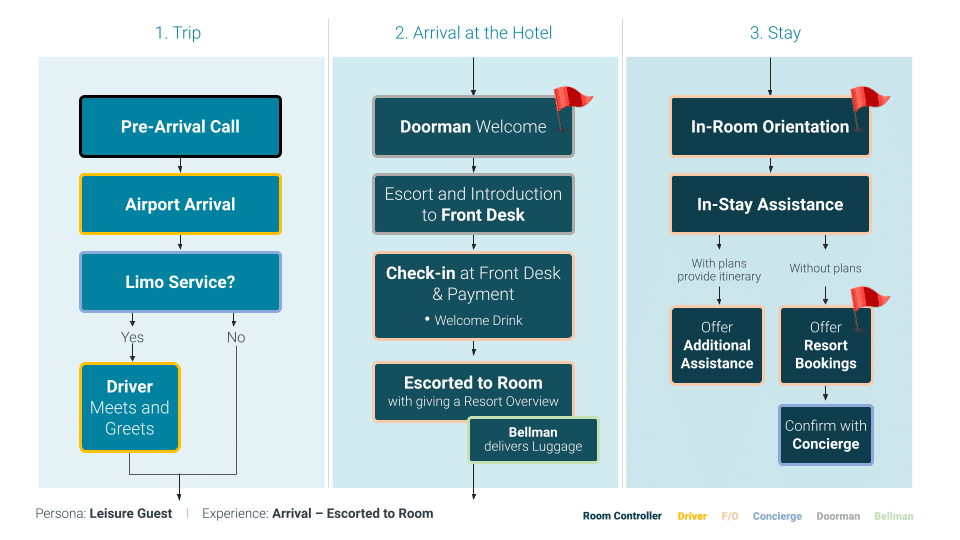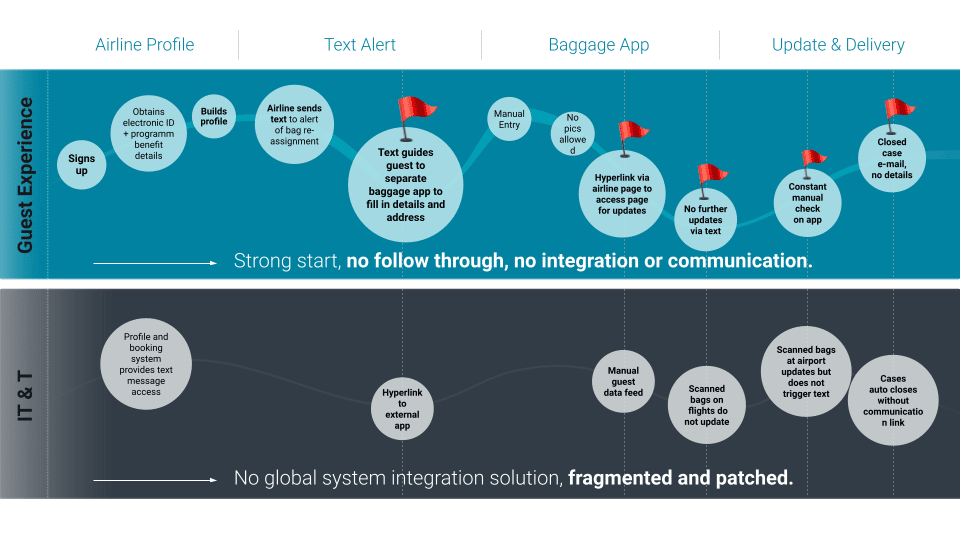How Hotels Can Win the Guest Satisfaction Space with Guest Journeys

Workforce challenges impact guest satisfaction. In fact, it would not be a stretch to say that the challenges hospitality organizations face with their guests stem from issues within their workforce.
Customer experience can soon take over the price and product as a key brand differentiator. And therefore the service delivery will really become more crucial than ever and is something that would need to be addressed for 2023.
– Anja Luthje, Founder, CEO of Unique Hospitality Solutions
A recent webinar explored:
- Challenges hotels currently face in delivering a quality guest experience
- How the labor shortage is impacting guest satisfaction
- Why higher guest satisfaction should be a core value and goal for hotels
The panelists were:
- Andrada Paraschiv, VP of Hospitality, Beekeeper
- Anja Luthje, Founder, and CEO of Unique Hospitality Solutions
Here’s a recap of what we discussed.
Watch the full recording of our guest satisfaction webinar here.
Hospitality Labor Challenges
At Beekeeper, we are in the business of empowering frontline workers to make them an organization’s most valuable asset. We want to give hotel employees the tools and technology they need to make a more positive impact on the guest experience.
Working with hospitality organizations, we’ve seen how the labor shortage is affecting the industry. Challenges include:
1. Reduced Staffing Level
According to the US Labor Bureau of Statistics, about 10% of roles in hospitality are open and have been open for a while. This means organizations are operating at an 85-90% staffing level.
2. High Quit Rate
Relative to the overall economy, workers are disproportionately leaving jobs in leisure and hospitality. According to the U.S. Travel Association, about 5-6% of hospitality workers are leaving each month.
3. Inexperienced Talent Pool
Hospitality organizations are forced to hire candidates with little to no experience. This impacts how quickly new hires can adapt to their role and the resources hotels must provide in order to train these employees.
4. Expensive for Operators
Hikes in wages, bonuses, and benefits to attract workers mean that the wage for non-supervisory roles in hotels has increased in the last two years. As the cost of labor is going up, organizations are foregoing revenue by closing services due to the labor shortage.
All of these challenges impact the quality of the guest experience. By hiking up prices, cutting corners, and reducing amenities, hotels are potentially jeopardizing the quality of their customer service.
Hospitality Post-Pandemic: Changes and Challenges
According to Anja Luthje, a 20-year hospitality industry veteran, one of the areas that hotel guests are most unhappy about is the value for money.
Value for money is not really about the actual cost. It’s really about the perception of what the customer receives for the cost. With the increase in rates, customers have to perceive the quality of service measures up.
It’s not enough to deliver service levels at the pre-pandemic level. You have to evolve because our customers have evolved. And the service levels have to be even higher
– Anja Luthje, Founder, CEO of Unique Hospitality Solutions.
As the behaviors of customers in hospitality have changed, service in hotels will have to adapt to these changes. Of course, this is difficult to accomplish during a labor shortage and high turnover, which are placing additional stressors on hotel staff.
With high turnover rates, existing employees have to accommodate the constant onboarding and training of new employees, which takes time away from their other duties.
The labor shortage has also pushed managers to be more active in other roles as a more permanent rather than a temporary solution. Managers are often so much in the trenches that they see issues with guest experience delivery and yet are too busy to point them out.
This phenomenon of tacit approval and downskilling on the part of managers presents another roadblock to delivering a quality guest experience.
Crafting Guest Journeys to Win the Guest Satisfaction Space
Mapping out the guest journey can provide valuable perspective in creating the best possible guest experience in the most efficient and cost-effective manner.
Guest journey maps itemize the sequence of service, for guests and employees, allowing teams to identify bottlenecks and come up with innovative ideas on how to improve. Let’s look at an example of how a hotel might map out the guest arrival process:

Through this process, teams might realize that they can reduce the process steps and the number of employees the guest interacts with, creating a leaner, more efficient, and cost-effective process. Additionally, the guest’s experience improves because they can spend more quality time interacting with one employee.
Here are 4 additional ways hotels can craft guest journeys to improve the guest experience:
1. Update and address legacy systems
Hotels often implement legacy systems that are outdated, architected in silos, and make data collection a challenge. Moving away from legacy systems and embracing modern technologies can allow hotels to not only improve operations but analyze and act on data about the guest experience.
2. Evaluate existing systems
While legacy systems might need to be eliminated altogether, some existing systems within hotels might prove useful. The key, according to Anje Luthje, is to evaluate those existing solutions and use them to a higher degree. In her experience, hotels often have underutilized systems that were set in place when the hotel opened, or were forgotten when the hotel changed management. Maximizing and leveraging existing systems might help bridge current gaps in the guest journey.

Mapping out guest journeys from the perspective of the guest vs. the IT side, for example, might show any gaps that need to be addressed. Management can then see which parts of the guest journey need additional work and which can rely on existing systems.
3. Digitize SOPs
Traditionally, SOPs are paper-based and are written when the hotel opens. Often, new employees receive them in the form of a big binder that then gets put away until the next hire’s onboarding. Learning SOPs this way can be overwhelming and inefficient. After all, how can a new employee be expected to remember and retain all that information?
Digitizing SOPs puts the information at the employee’s fingertips so they can access it anytime. With tools like Beekeeper, hotel employees can access SOPs on their mobile devices and have them translated into any language. Videos, pictures, and exercises all enrich the learning experience and make it more likely employees will remember and implement SOPs. This not only engages employees but sets them up for success by eliminating additional training demands from additional team members. Managers can then perform on-the-job performance coaching rather than teaching.
4. Focus on Building Trust
In the evolution of service delivery, hotels were focused on a very scripted — yet consistent — service delivery. Then came personalization and emotional intelligence. Now, we talk about transformative experiences. These are all relevant, but what has always mattered most is trust.
The currency of service, loyalty, and profits will ultimately be underpinned by trust. How much do your employees and customers trust your hotel and your brand?
– Anja Luthje, Founder, CEO of Unique Hospitality Solutions
Deloitte came out with a study about trust in brands and found that it came down to four components: humanity, transparency, capability, and reliability. Many of these components relate directly to service. Planning in these areas for 2023 will be crucial.
Want to hear more, including tips for how hotels can budget and plan for 2023? Watch the full webinar here.

About the author
Andrada Paraschiv
VP of Hospitality
As VP of Hospitality, Andrada leads Beekeeper’s effort to help hospitality organizations improve communication and ultimately drive employee engagement and performance. Previously, Andrada served as Executive Director, Luxury Internal Communications and Engagement at AccorHotels and Executive Director, Communications & Strategy at Fairmont Raffles Hotels International. In that capacity, she collaborated with Beekeeper to bring the nearly 50,000 frontline employees working together as one dispersed, yet united, team. Andrada also served as a consultant with McKinsey & Co., working on strategy and organizational transformations with large multinational companies in the EMEA region. She holds an MBA from the Wharton School and an MA in International Studies from University of Pennsylvania.
Interested in learning more?
Join 1200+ companies transforming frontline work with Beekeeper. Start your journey today to make every task easier, every team stronger, and every shift smoother.







